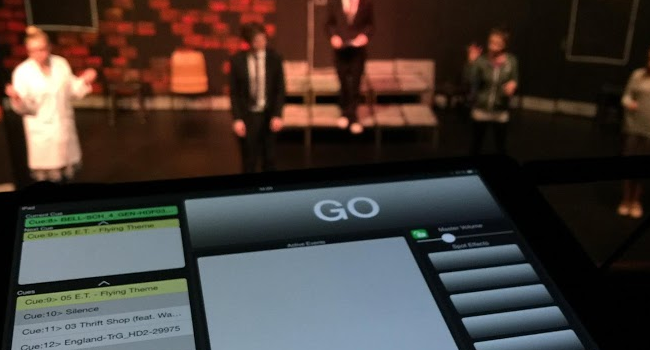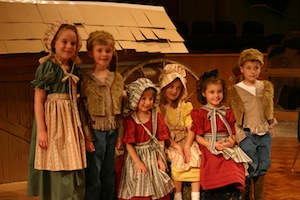Nottingham Girls’ High School has joined forces with the NSPCC to raise vital funds for the community. Pupils were joined by esteemed alumna Jenny Farr MBE, president of the Nottingham branch of the NSPCC, and held a Mad Hatter-style coffee morning campaign to mark 125 years of NSPCC East Midlands. The event raised over £1000, and included an Alice in Wonderland-themed fancy dress, bake sales, tea parties and an art competition.
We know that mobile technology can work wonders for the classroom, but how can it be used during Performing Arts productions? Ian Fletcher of Driftwood Software explains how the iPad is the perfect tool for setting the right atmosphere.

Close your eyes and listen. What do you hear? If the answer is “nothing”, then try again. There are very few places in the world that are completely silent. Every room, every environment has a sound. Understanding this and using these soundscapes correctly within a school or college Drama production can make a massive difference to the suspension of disbelief you are trying to create. And the act of thinking about and designing them can be a fun exercise for a drama class and make sound a more inclusive subject.
Dublin’s Larkin Community College has been working with the Abbey Theatre to bring a terrific new surge of creativity into their classrooms. The legendary theatre, also known as Amharclann na Mainistreach and the National Theatre of Ireland, has been working with the local college on their Theatre-Making and Citizenship programme. According to the Irish Times, this initiative has seen students hugely invested in creative learning.
I think most people who work as teachers would agree with the importance of having high expectations of your pupils. And similarly, how important it is to model these expectations, and strive to do so, most of the time. I'm sure that again, for most teachers, it comes naturally to model good behaviours; positive attitudes and respect. After all, why should we expect this from our students if we ourselves are lacking in traits that are so fundamental to healthy human interactions?

Many people think that drama is just about improvisation, or performing, but it is actually a powerful teaching tool that can inspire learning across the curriculum. Drama and literacy have always been cosy bedfellows – theatre and plays are the performance arm of drama and are often a natural progression to its processes. Many drama lessons use literary texts – poems, letters, quotations – as a stimulus and writing in role is a recognised and valuable aspect of drama work. But the value of drama as a teaching tool expands across the curriculum and can help children to explore and understand a wide range of themes, issues and subjects.

Most schools don’t have a designated drama studio but some have recently begun to convert old classrooms, or mobile classrooms, into drama spaces. These are my top tips for creating a drama studio:

At the core of all drama is the concept of shared experience: of sharing thoughts, feelings, ideas, opinions and information. Drama also, by its very nature, encourages participants to explore personal and social issues and builds self-esteem. But drama is at its most effective when used in the primary classroom to support and enhance thinking and learning.
For example, when reading and discussing the traditional story of Goldilocks and the Three Bears, drama could be used to explore behaviour by placing certain characters from the story on the ‘hotseat’ – this can involve either the teacher or pupils working in role.

A community-driven platform for showcasing the latest innovations and voices in schools
Pioneer House
North Road
Ellesmere Port
CH65 1AD
United Kingdom